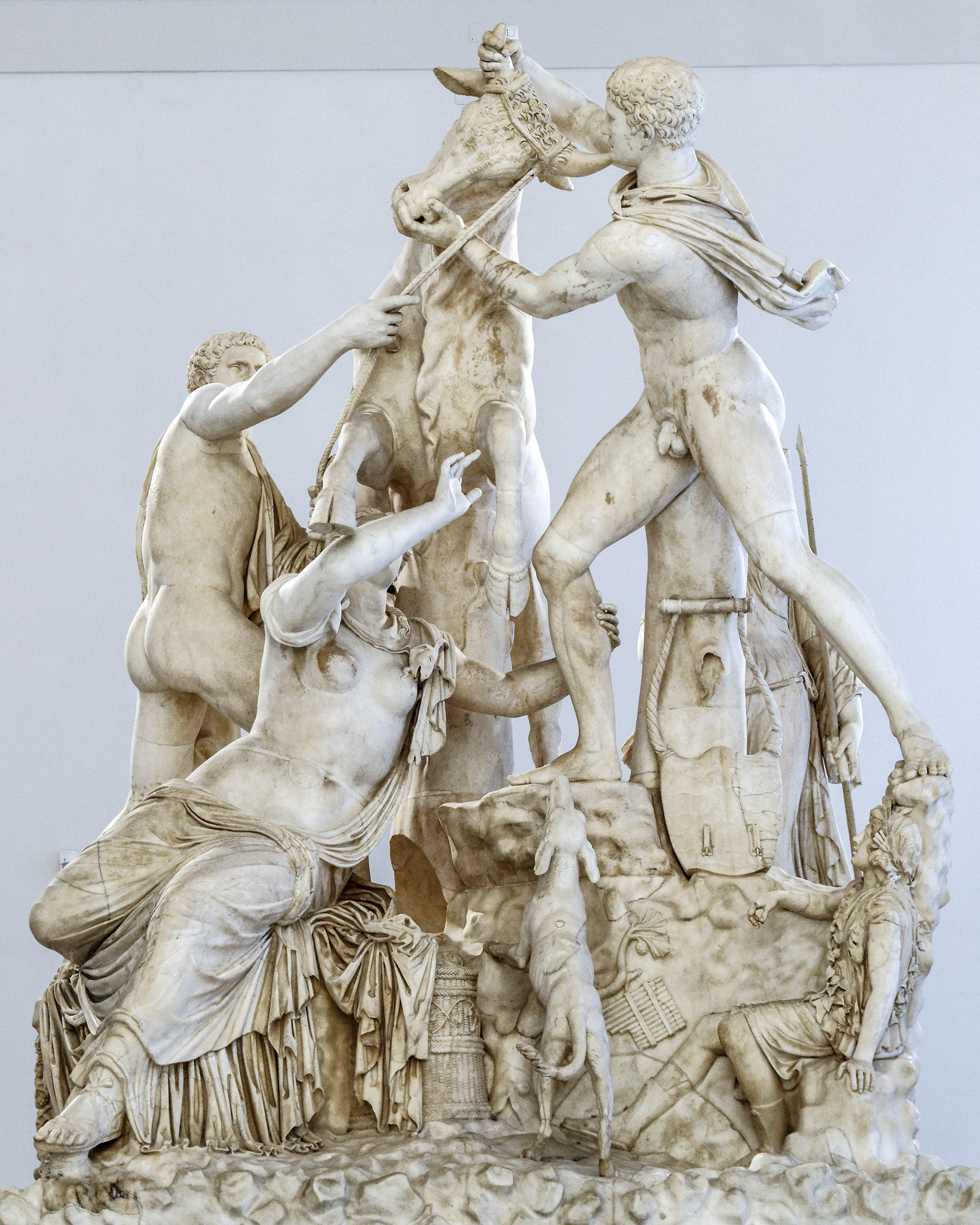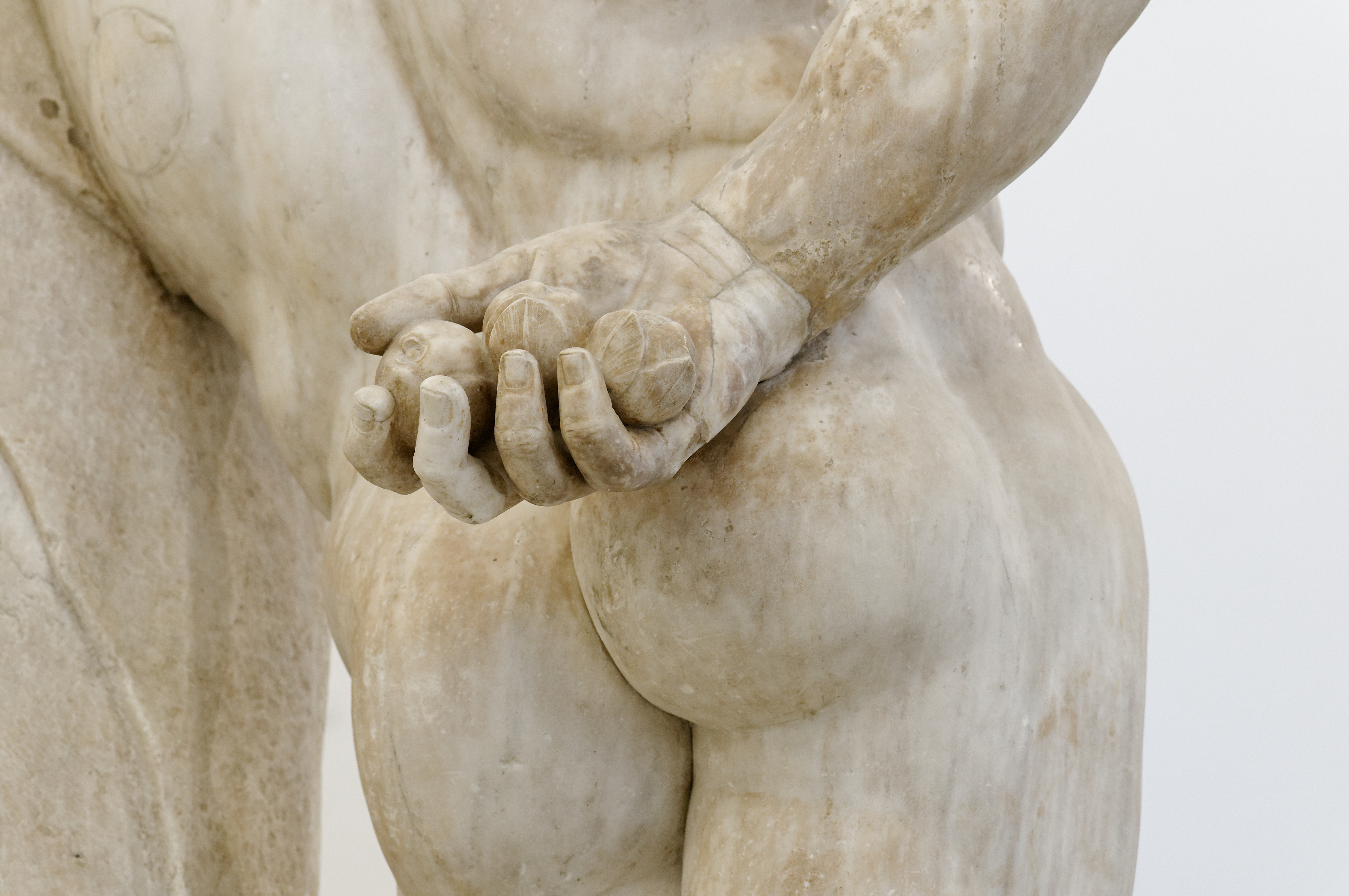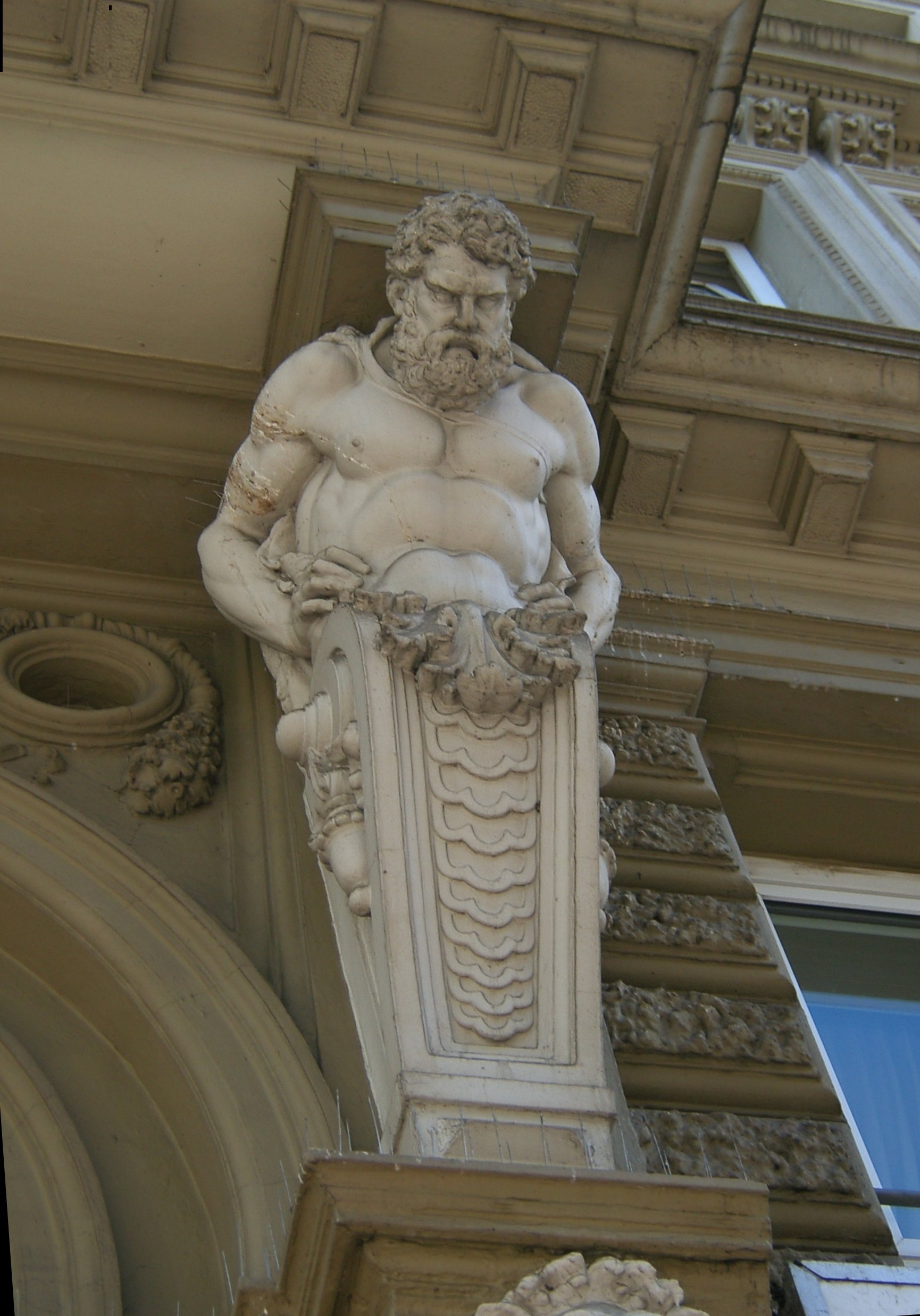|
Tepidarium
The tepidarium was the warm (''tepidus'') bathroom of the Roman baths heated by a hypocaust or underfloor heating system. The speciality of a tepidarium is the pleasant feeling of constant radiant heat which directly affects the human body from the walls and floor. There is an interesting example at Pompeii; this was covered with a semicircular barrel vault, decorated with reliefs in stucco, and round the room a series of square recesses or niches divided from one another by telamones. The tepidarium was the great central hall around which all the other halls were grouped, and which gave the key to the plans of the thermae. It was probably the hall where the bathers first assembled prior to passing through the various hot baths ( caldaria) or taking the cold bath (frigidarium). The tepidarium was decorated with the richest marbles and mosaics; it received its light through clerestory windows on the sides, the front, and the rear, and would seem to have been the hall in which the ... [...More Info...] [...Related Items...] OR: [Wikipedia] [Google] [Baidu] |
Thermae
In ancient Rome, (from Greek , "hot") and (from Greek ) were facilities for bathing. usually refers to the large imperial bath complexes, while were smaller-scale facilities, public or private, that existed in great numbers throughout Rome. Most Roman cities had at least one – if not many – such buildings, which were centers not only for bathing, but socializing and reading as well. Bathhouses were also provided for wealthy private villas, town houses, and forts. They were supplied with water from an adjacent river or stream, or within cities by aqueduct. The water would be heated by fire then channelled into the caldarium (hot bathing room). The design of baths is discussed by Vitruvius in ''De architectura'(V.10) Terminology '','' '','' '','' and may all be translated as 'bath' or 'baths', though Latin sources distinguish among these terms. or , derived from the Greek signifies, in its primary sense, a bath or bathing-vessel, such as most persons of a ... [...More Info...] [...Related Items...] OR: [Wikipedia] [Google] [Baidu] |
Ancient Roman Bathing
Bathing played a major part in ancient Roman culture and society. It was one of the most common daily activities and was practiced across a wide variety of social classes. Though many contemporary cultures see bathing as a very private activity conducted in the home, bathing in Rome was a communal activity. While the extremely wealthy could afford bathing facilities in their homes, private baths were very uncommon, and most people bathed in the communal baths (''thermae''). In some ways, these resembled modern-day destination spas as there were facilities for a variety of activities from exercising to sunbathing to swimming and massage. Such was the importance of baths to Romans that a catalogue of buildings in Rome from 354 AD documented 952 baths of varying sizes in the city. Public baths became common throughout the empire as a symbol of "Romanitas" or a way to define themselves as Roman. They were some of the most common and most important public buildings in the empire as some ... [...More Info...] [...Related Items...] OR: [Wikipedia] [Google] [Baidu] |
Pompei (5630969600)
Pompei (; nap, Pumpeje, ) or Pompeii (, as in the name of the ancient city) is a city and commune in the Metropolitan City of Naples, Italy, home of the ancient Roman ruins of Pompeii that are part of the UNESCO World Heritage Sites. History Modern Pompei was founded in 1891 after the building of the Shrine of Our Lady of Pompei by the lawyer Bartolo Longo. Geography The town of Pompei is located at the eastern borders of its province, and its urban area is contiguous with Scafati, in the Province of Salerno. It borders also with Torre Annunziata, Castellammare di Stabia, Boscoreale, Santa Maria la Carità and Sant'Antonio Abate. Main attractions The ancient city of Pompeii Modern Pompei is mainly famous for the ruins of the ancient city of Pompeii, located in the zone of Pompei Scavi. The vast archaeological area is under Unesco patronage and attracts tourists from all around the world. The Shrine of Our Lady of Pompei The Shrine of Our Lady of Pompei, dedicated to Ou ... [...More Info...] [...Related Items...] OR: [Wikipedia] [Google] [Baidu] |
Pope Paul III
Pope Paul III ( la, Paulus III; it, Paolo III; 29 February 1468 – 10 November 1549), born Alessandro Farnese, was head of the Catholic Church and ruler of the Papal States from 13 October 1534 to his death in November 1549. He came to the papal throne in an era following the sack of Rome in 1527 and rife with uncertainties in the Catholic Church following the Protestant Reformation. His pontificate initiated the Counter-Reformation with the Council of Trent in 1545, as well as the wars of religion with Emperor Charles V's military campaigns against the Protestants in Germany. He recognized new Catholic religious orders and societies such as the Jesuits, the Barnabites, and the Congregation of the Oratory. His efforts were distracted by nepotism to advance the power and fortunes of his family, including his illegitimate son Pier Luigi Farnese. Paul III was a significant patron of artists including Michelangelo, and it is to him that Nicolaus Copernicus dedicated his h ... [...More Info...] [...Related Items...] OR: [Wikipedia] [Google] [Baidu] |
National Archaeological Museum, Naples
The National Archaeological Museum of Naples ( it, Museo Archeologico Nazionale di Napoli, italic=no, sometimes abbreviated to MANN) is an important Italian archaeological museum, particularly for ancient Roman remains. Its collection includes works from Greek, Roman and Renaissance times, and especially Roman artifacts from the nearby Pompeii, Stabiae and Herculaneum sites. From 1816 to 1861, it was known as Real Museo Borbonico ("the Royal Bourbon Museum"). Building The building was built as a cavalry barracks in 1585. From 1616 to 1777 it was the seat of the University of Naples. During the 19th century, after it became a museum, it suffered many changes to the main structure. Collections The museum hosts extensive collections of Greek and Roman antiquities. Their core is from the Farnese Collection, which includes a collection of engraved gems (including the Farnese Cup, a Ptolemaic bowl made of sardonyx agate and the most famous piece in the "Treasure of the Magnifi ... [...More Info...] [...Related Items...] OR: [Wikipedia] [Google] [Baidu] |
Farnese Bull
The ''Farnese Bull'' ( it, Toro Farnese), formerly in the Farnese collection in Rome, is a massive Roman elaborated copy of a Hellenistic sculpture. It is the largest single sculpture yet recovered from antiquity. Along with the rest of the Farnese antiquities, it has been since 1826 in the collection of the Museo Archeologico Nazionale Napoli in Naples, inv. no. 6002, though in recent years sometimes displayed at the Museo di Capodimonte across the city. The sculpture in Naples is much restored, and includes around the base a child, a dog, and other animals not apparently in the original composition, which is known from versions in other media. Pliny the Elder mentions what was presumably the prime version of it as the work of the Rhodian artists Apollonius of Tralles and his brother Tauriscus, stating that it was commissioned at the end of the 2nd century BCE and carved from just one whole block of marble. It was imported from Rhodes as part of the remarkable collection of ... [...More Info...] [...Related Items...] OR: [Wikipedia] [Google] [Baidu] |
Farnese Hercules
The ''Farnese Hercules'' ( it, Ercole Farnese) is an ancient statue of Hercules, probably an enlarged copy made in the early third century AD and signed by Glykon, who is otherwise unknown; the name is Greek but he may have worked in Rome. Like many other Ancient Roman sculptures it is a copy or version of a much older Greek original that was well known, in this case a bronze by Lysippos (or one of his circle) that would have been made in the fourth century BC. This original survived for over 1500 years until it was melted down by Crusaders in 1205 during the Sack of Constantinople. The enlarged copy was made for the Baths of Caracalla in Rome (dedicated in 216 AD), where the statue was recovered in 1546, and is now in the Museo Archeologico Nazionale in Naples. The heroically-scaled ''Hercules'' is one of the most famous sculptures of antiquity, and has fixed the image of the mythic hero in the European imagination. The ''Farnese Hercules'' is a massive marble statue, foll ... [...More Info...] [...Related Items...] OR: [Wikipedia] [Google] [Baidu] |
Baths Of Caracalla
, alternate_name = it, Terme di Caracalla , image = File:Baths of Caracalla, facing Caldarium.jpg , caption = The baths as viewed from the south-west. The caldarium would have been in the front of the image , coordinates = , map_dot_label=Baths of Caracalla , map_caption=The location of the baths in Rome during Antiquity , map_type=Italy Rome Antiquity , map_size=270 , image_size=270 , mapframe-frame-width=270 , mapframe=yes , mapframe-caption=Click on the map for a fullscreen view , mapframe-zoom=13 , mapframe-marker=monument , mapframe-wikidata=yes , location = Rome, Italy , region = '' Regio XII Piscina Publica'' , type = Thermae , part_of = Ancient Rome , area = , volume = , height = , builder = Caracalla , material = Marble, pozzolana, lime, tuff, basalt , built = probably AD , abandoned = circa AD , epochs = Imperial , condition = i ... [...More Info...] [...Related Items...] OR: [Wikipedia] [Google] [Baidu] |
Clerestory
In architecture, a clerestory ( ; , also clearstory, clearstorey, or overstorey) is a high section of wall that contains windows above eye level. Its purpose is to admit light, fresh air, or both. Historically, ''clerestory'' denoted an upper level of a Roman basilica or of the nave of a Romanesque or Gothic church, the walls of which rise above the rooflines of the lower aisles and are pierced with windows. Similar structures have been used in transportation vehicles to provide additional lighting, ventilation, or headroom. History Ancient world The technology of the clerestory appears to originate in the temples of ancient Egypt. The term "clerestory" is applicable to Egyptian temples, where the lighting of the hall of columns was obtained over the stone roofs of the adjoining aisles, through gaps left in the vertical slabs of stone. Clerestory appeared in Egypt at least as early as the Amarna period. In the Minoan palaces of Crete such as Knossos, by contrast, lightwe ... [...More Info...] [...Related Items...] OR: [Wikipedia] [Google] [Baidu] |
Caldarium
230px, Caldarium from the Roman Baths at Bath, England. The floor has been removed to reveal the empty space where the hot air flowed through to heat the floor. A caldarium (also called a calidarium, cella caldaria or cella coctilium) was a room with a hot plunge bath, used in a Roman bath complex. This was a very hot and steamy room heated by a hypocaust, an underfloor heating system using tunnels with hot air, heated by a furnace tended by slaves. This was the hottest room in the regular sequence of bathing rooms; after the caldarium, bathers would progress back through the warm bathroom to the cold water room. In the caldarium, there would be a bath (alveus, piscina calida or solium) of hot water sunk into the floor and there was sometimes even a laconicum—a hot, dry area for inducing sweating. The bath's patrons would use olive oil to cleanse themselves by applying it to their bodies and using a strigil to remove the excess. This was sometimes left on the floor for the ... [...More Info...] [...Related Items...] OR: [Wikipedia] [Google] [Baidu] |
Frigidarium
A frigidarium is one of the three main bath chambers of a Roman bath or ''thermae'', namely the cold room. It often contains a swimming pool. The succession of bathing activities in the ''thermae'' is not known with certainty, but it is thought that the bather would first go through the apodyterium, where he would undress and store his clothes, and then enter the ''elaeothesium'' or ''unctuarium'' to be anointed with oil. After exercising in a special room or court, he would enjoy the hot room, known as ''calidarium'' or ''caldarium'', then the steam room (a moist '' sudatorium'' or a dry ''laconicum''), where he would most likely scrape the by now grimy oil with the help of a curved metal ''strigil'' off his skin, before finally moving to the ''frigidarium'' with its small pool of cold water or sometimes with a large swimming pool (though this, differently from the '' piscina natatoria'', was usually covered). The water could be also kept cold by using snow. The bather would fini ... [...More Info...] [...Related Items...] OR: [Wikipedia] [Google] [Baidu] |
Telamones
In European architectural sculpture, an atlas (also known as an atlant, or atlante or atlantid; plural atlantes)''Aru-Az , Michael Delahunt ArtLex Art Dictionary , 1996–2008. is a support sculpted in the form of a man, which may take the place of a column, a or a . The Roman term for such a sculptural support is |
.jpg)








